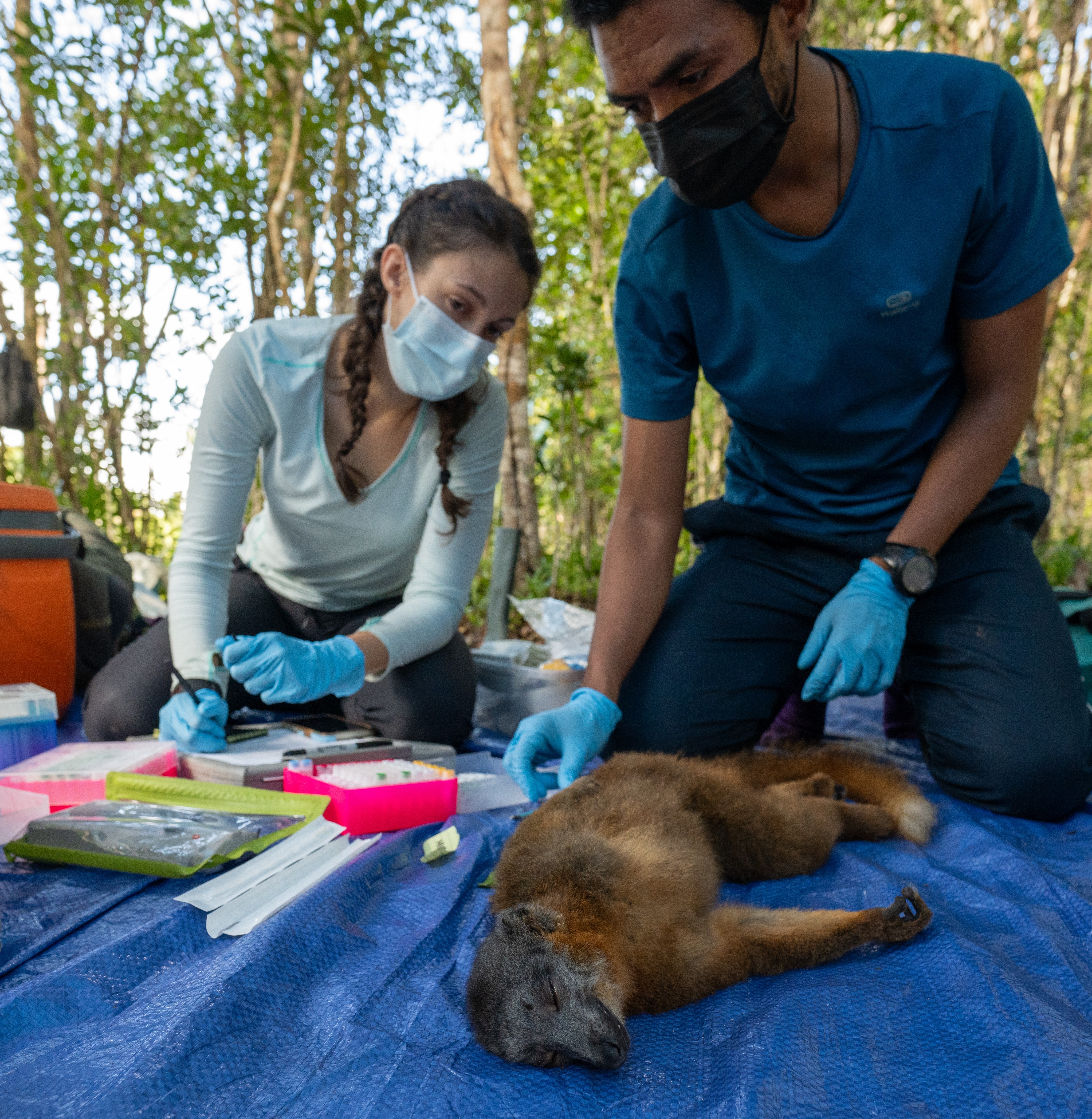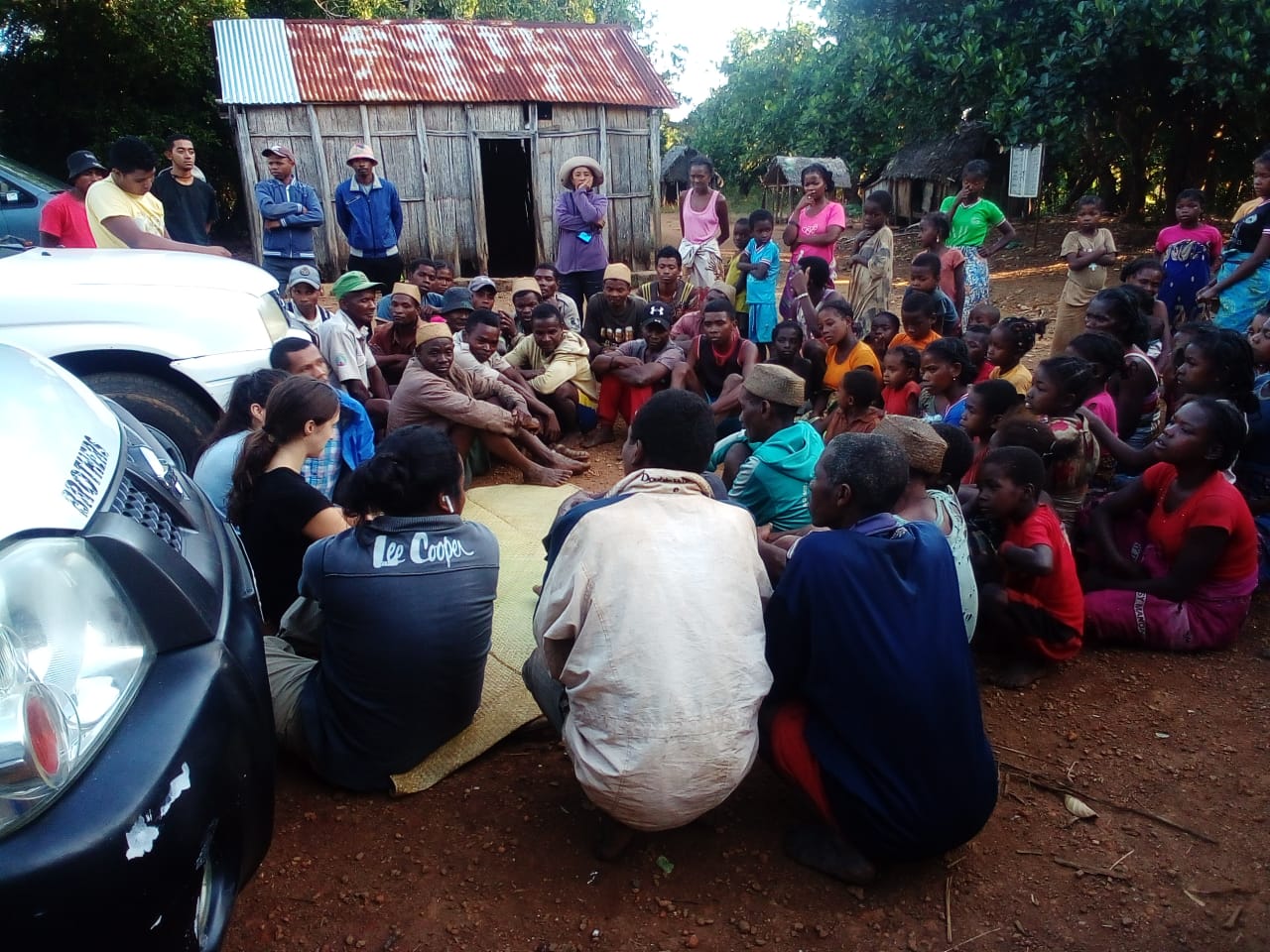
The Virus Hunters
Looking for viral threats in the era of climate change
But to Paietta, even more intriguing than these creatures were the microbes lurking within them.

At any given moment, our bodies and those of other animals are teeming with viruses -- even when we’re healthy. Most of them are unknown to science, Paietta said.
Scientists estimate there may be 1.5 million viruses still waiting to be discovered in mammals alone.
Not all of them cause disease or will go on to infect new species -- a phenomenon called spillover.
But some of them might, as the virus behind the COVID-19 pandemic likely did. And Paietta hopes to find some of the pathogens that could, before they become a threat.
Most research on viral spillovers focuses on those that “spill” from wildlife to humans, Paietta said. And for good reason: Nearly two thirds of the emerging infectious diseases worldwide got their start by passing from animals to people. Think Ebola, SARS, monkeypox, and of course, COVID-19.
“But viruses can go both directions,” Paietta said.
The virus that causes COVID-19, for example, has been transmitted from humans back to numerous animals ranging from deer to cats. Humans have also passed H1N1 influenza to pigs, and deadly respiratory viruses to wild chimpanzees and gorillas.
“We're interested in what people and domestic animals can give to wildlife too,” said Paietta, who works in biology professor Anne Yoder’s lab.
This has implications for conservation, especially given that 95% of the more than 100 lemur species found in Madagascar are already threatened with extinction, largely due to deforestation and habitat loss.
Within the past 60 years Madagascar has lost nearly half of its forests, mostly to make way for rice farms. With deforestation, people move into areas they haven’t inhabited before, and the buffers between people and wildlife shrink.
But when it comes to spillover there’s another factor at play: climate change.
Situated in the Indian Ocean, Madagascar is already vulnerable to extreme weather events such as tropical cyclones, floods and droughts -- and global warming has only made them worse.
Cyclones damage crops and wreck houses, forcing people into the forest in search of timber to rebuild their homes and food to feed their families, said Paietta’s collaborator Brian McAdoo, a disaster risk expert at the Nicholas School of the Environment.
McAdoo’s graduate student Ryan Parks, a Ph.D. Student in earth and climate sciences, is working with Paietta to understand the role of flooding, which creates breeding grounds for mosquitoes that can transmit viruses -- all of which create more routes of disease transmission between humans and wildlife.
For her part, Paietta has been focusing on viruses in lemurs. Though lemurs are our primate cousins, we know very little about what viruses they carry, Paietta said.
With help from researchers at Zoo New England, Arizona State University, and Malagasy colleagues at Mahaliana Labs and Centre ValBio, she’s been sampling lemurs and other animals living in and around the reserve to catalog all the viruses circulating in their bodies.
The researchers are looking for known viruses, but also for new viruses that scientists haven’t seen before, and that could be spreading silently from one species to the next.
To collect samples, this summer they darted lemurs and set up Sherman traps -- a cage that closes when an animal enters and steps on a platform -- returning later to collect rats and other small animals lured in by the bait.
They performed health exams on any animals they captured, taking oral swabs and blood and fecal samples to look for viruses in their mouths, their guts, and elsewhere in their bodies before releasing them back into the forest.
The researchers also sampled animals that live among people or near homes and farms, such as cats, pigs, chickens and cattle, which can act as intermediates.
“Invasive and domestic animals serve as bridges between the forests and villages, because they are moving among them constantly,” Paietta said.
Between this summer and a similar trip in 2022, Paietta collected bodily secretions from some 280 animals, totaling roughly 1000 samples.
She carried the samples back to the U.S., frozen in liquid nitrogen tanks. At Duke and the PREMISE lab at the NIAID Vaccine Research Center, researchers will extract the genetic material from any viruses that might be present and sequence their genomes using an approach called metagenomic sequencing.
Unlike traditional virus detection methods, which involve testing for specific pathogens, metagenomic sequencing can identify many pathogens at once -- even viruses Paietta doesn’t know she’s looking for yet.
Paietta’s work is part of a larger 10-year effort, organized by a nonprofit called Health in Harmony in collaboration with the local community living around the reserve.

The idea is to look at how improving people’s access to food and healthcare also affects biodiversity, deforestation, and disease transmission in the area.
“We’re using a ‘One Health’ approach that looks at the intersection between human health, animal health and environmental health,” since they’re interconnected, Paietta said.
Paietta hopes to start analyzing genome sequences by the end of the semester.
“Then I get to look at all the data and start looking for viruses.”
It’s an exciting time to be doing this kind of research, Paietta said.
Already, she’s discovered what appear to be three new viruses called papillomaviruses that scientists have never seen before, uncovered while testing metagenomic methods at the Duke Lemur Center in collaboration with Arvind Varsani at Arizona State University.
“It's a field that I'm really lucky to be tapped into, because there is not much known,” Paietta said. “So everything we find is new.”